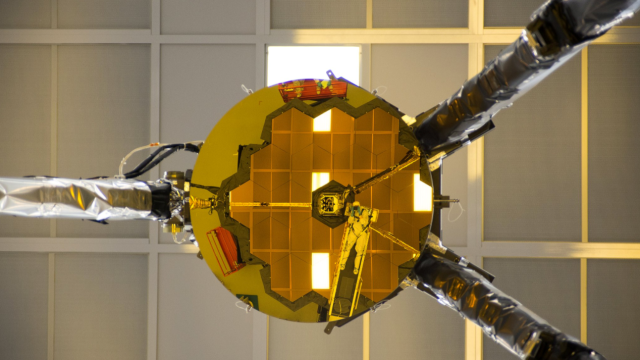The Webb Space Telescope has been dutifully beaming back incredible images of the cosmos since its “perfect” alignment earlier this year — but nothing is entirely perfect, even a $US10 ($14) billion telescope. One of Webb’s observing mechanisms has apparently run into a bit of trouble, and mission engineers are working to figure out a solution.
On August 24, a mechanism used to support Webb’s medium-resolution spectroscopy (MRS) experienced “increased friction” while being set up for a science observation, NASA said in a blog post on Tuesday. The space agency called for a meeting of an anomaly review board on September 6 to “assess the best path forward.” As the board works to analyse the issue and develop strategies to resolve it, NASA has paused observations using this particular mode.
The MRS observing mode is part of Webb’s Mid-Infrared Instrument (MIRI), which uses a camera and a spectrograph to see light in the mid-infrared part of the spectrum (wavelengths that are longer than what human eyes can see). MIRI has four observing modes: imaging, coronagraphic imaging, low-resolution spectroscopy, and medium-resolution spectroscopy. MRS is useful for observing signals from the interaction of light and matter, like the emissions coming from molecules and dust in planet-forming disks.
The glitch in question affected a mechanism that functions like a “grating wheel” for the MRS observing mode, allowing scientists to select between short, medium, and longer wavelengths when making observations using that particular mode, according to NASA.
For now, that mode is on hold while NASA tries to fix the issue. “The observatory is in good health, and MIRI’s other three observing modes – imaging, low-resolution spectroscopy, and coronagraphy – are operating normally and remain available for science observations,” the space agency wrote.
Webb has recently wowed us with images of neighbouring planets Mars and Jupiter, but the telescope is also gearing up to bring us unprecedented views of the distant universe from its perch in space 1 million miles away from Earth. Webb is expected to operate for about 20 years or longer, so hopefully it can overcome a few technical glitches along its journey.
More: Whoa, NASA Just Turned the First Webb Telescope Images Into Sounds
